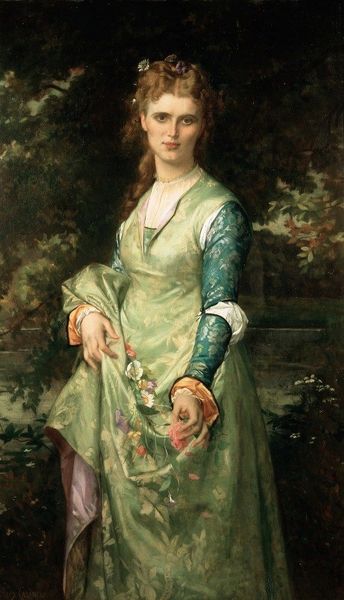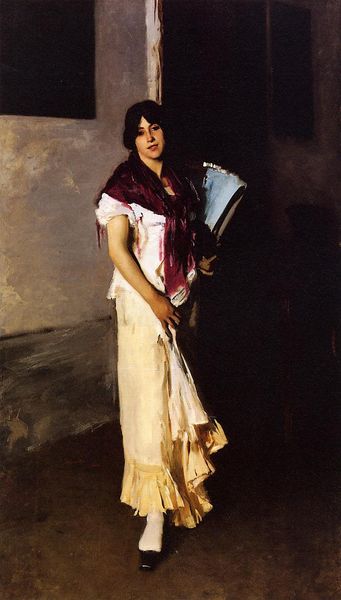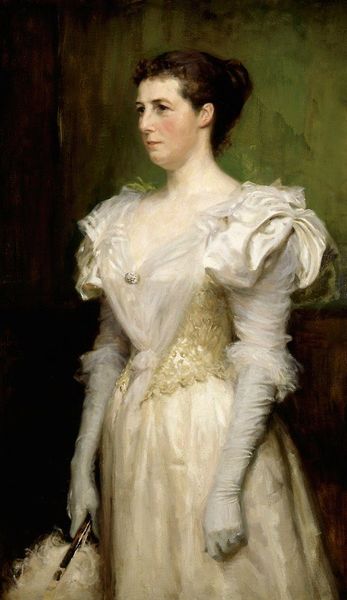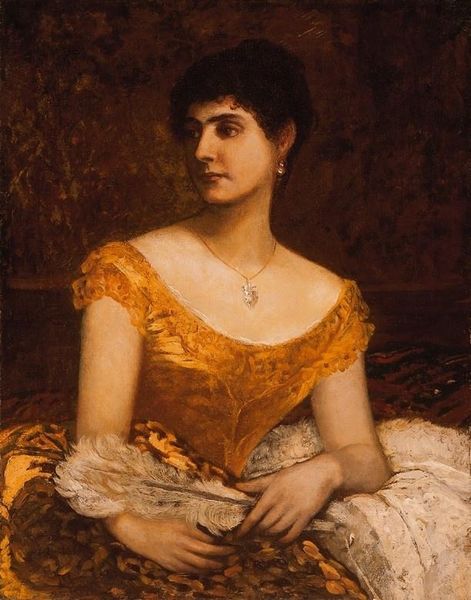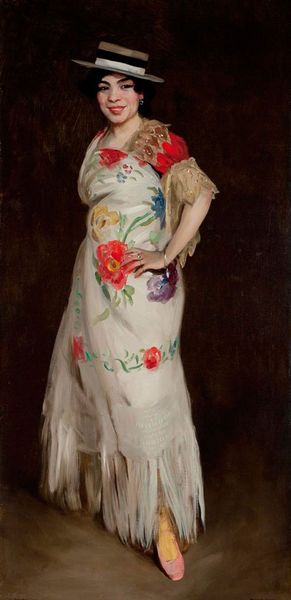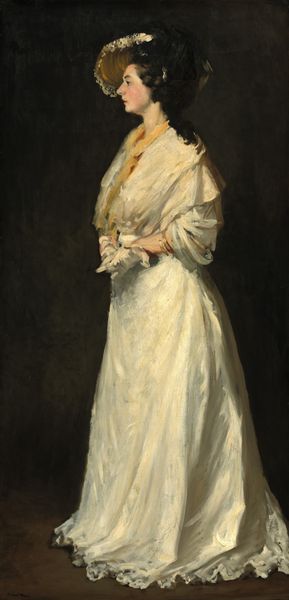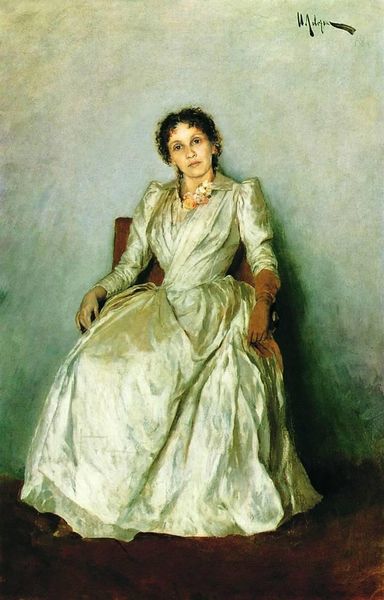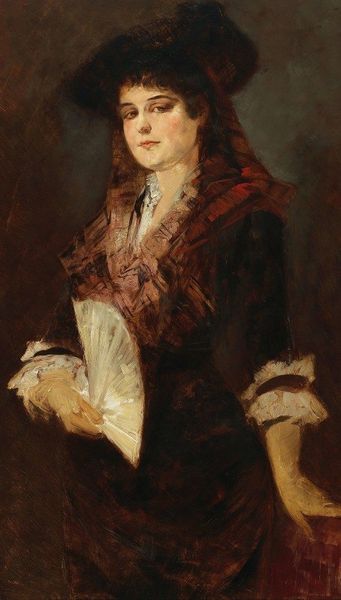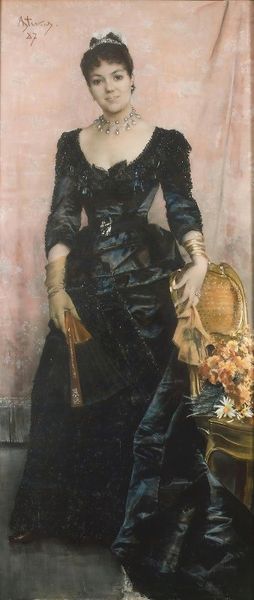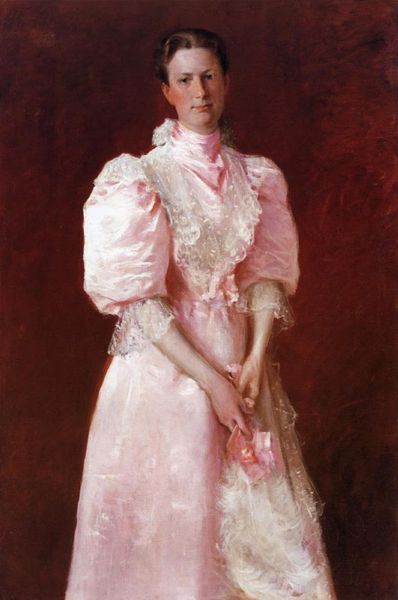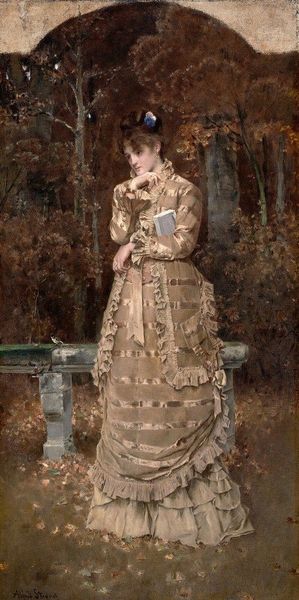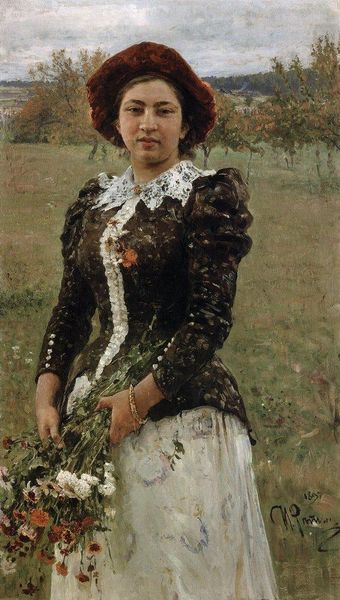
painting, oil-paint
#
portrait
#
painting
#
oil-paint
#
history-painting
#
academic-art
#
realism
Copyright: Public domain
Editor: This is Ivan Kramskoy’s 1882 oil painting, "Portrait of Sophia Ivanovna Kramskoy, daughter of the artist." She appears quite reserved; her hands are clasped and she averts direct eye contact. What story do you see being told here? Curator: I see a layered narrative about representation and agency. Consider the title itself; she’s primarily identified through her relationship to her father, a renowned artist. Her expression is thoughtful, even melancholic. Do you think that captures the restrictive roles afforded to women in 19th-century Russia? Editor: That's a really interesting point. I hadn't considered the limited roles for women at the time, but it makes her almost pensive gaze seem much more loaded with unfulfilled potential. It also makes me wonder if painting his own daughter was a kind of safe subject choice for Kramskoy. Curator: Exactly. Portraits were often commissioned to project power and status. But what happens when the subject is a woman, positioned within the domestic sphere? Is Kramskoy commenting on that confinement, or complicit in reinforcing it? How much agency does Sophia have in her own representation? Editor: It’s complex, because he painted her, giving her a presence in art, but it might not have been the presence *she* would have wanted. The painting exists because of her relationship with her father. I find this fascinating to consider when thinking about portraits, representation and agency, generally. Curator: Absolutely. Kramskoy gives us access to reflect on gender dynamics of that era, and question the very act of portraiture and representation. Art becomes a place to explore and interrogate societal norms and expectations around gender, then and now. Editor: That definitely gives me a lot to think about regarding Kramskoy's choices and the broader historical context! Curator: Indeed, a seemingly simple portrait becomes a rich site of inquiry when we consider the forces at play during its creation.
Comments
No comments
Be the first to comment and join the conversation on the ultimate creative platform.
